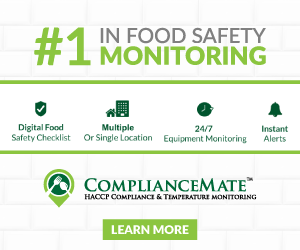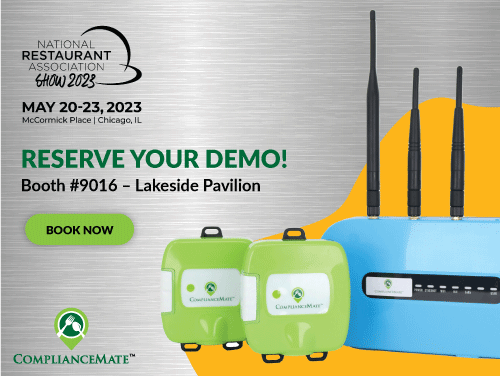Over the past few decades, a number of technological breakthroughs have made it easier for restaurants to ensure the safety of their food and thus the wellbeing of their customers. The biggest leap forward? Fully automated temperature monitoring, which eliminates many of the pitfalls that plague manual or partially automated processes. But what is it, how does it work, and why do restaurants need it?
Go wireless for accurate 24/7 monitoring
State-of-the-art automated temperature systems use wireless devices to record and transmit data. That helps foodservice establishments avoid the biggest HACCP-related problem: human error. Instead of relying on employees to make occasional inspections and record data faithfully, managers get precise, up-to-the-minute readings at any point during the day or night.
Owners can place wireless sensors anywhere they need advanced temperature controlÑfreezers, refrigerators, storage areas, etc. In return, they get more reliable, not to mention more complete data. With access to time-stamped temperature readings and integrated checklists, restaurants can comply with HACCP rules without worrying about inconsistences, recording errors, skipped inspections, lost papers, or other common mishaps.
Where does all that information go once itÕs recorded? You guessed itÑmodern temperature systems deliver results straight to mobile devices such as tablets and smartphones. That allows users to see real-time data no matter where they are or what theyÕre doing.
Need a quick update on a freezer while youÕre in front greeting customers? With a mobile-based monitoring system, itÕs as easy as pulling out a phone or checking a tablet. In the fast-paced world of foodservice, instant access makes life easier for busy managers and their staff, freeing up time for other tasksÑlike serving patrons.
Finally, managers get instant alerts on their devices, so they can know the moment a freezer or refrigerator area hits the dreaded danger zone or another pre-defined temperature. Throw in customizable e-checklists that can accommodate any set of compliance rules, and you have a comprehensive solution for keeping customers healthy while ensuring HACCP Compliance.
Go to the cloud for centralized recording
At the heart of next-generation temperature systems lies the cloud, the all-in-one solution that has revolutionized information gathering. Cloud-based storage allows restaurants to store real-time and historical data from one central location. With a world of information at their fingertips, owners can analyze information and make informed decisions about what works and what doesnÕt.
That gives restaurantsÑparticularly chainsÑthe tools they need to ensure safety and compliance. When it comes time for inspection, no one has to scrounge around for paper checklists, which may be scattered all over the place. With a cloud-based data system, mid- to high-level managers can log in and see all the relevant temperature data without having to visit multiple sites or even contact local managers.
In short, automated temperature monitoring systems deliver more reliable data in a more convenient manner. It makes HACCP compliance painless and gives restaurant owners greater peace of mind.
This article originally appeared in Restaurant Business Online.



